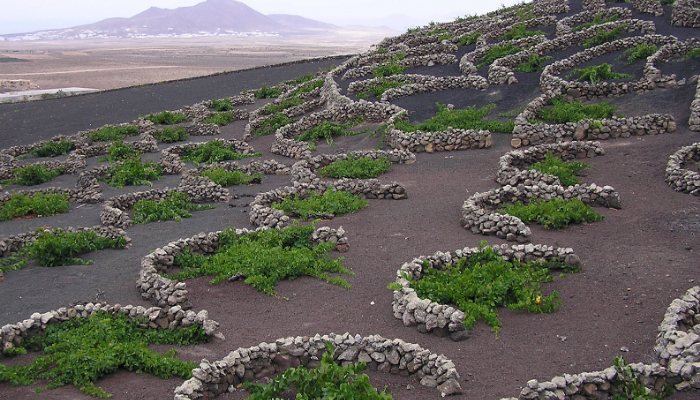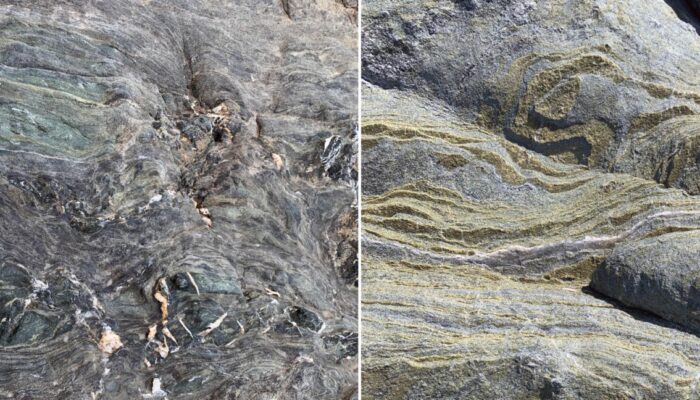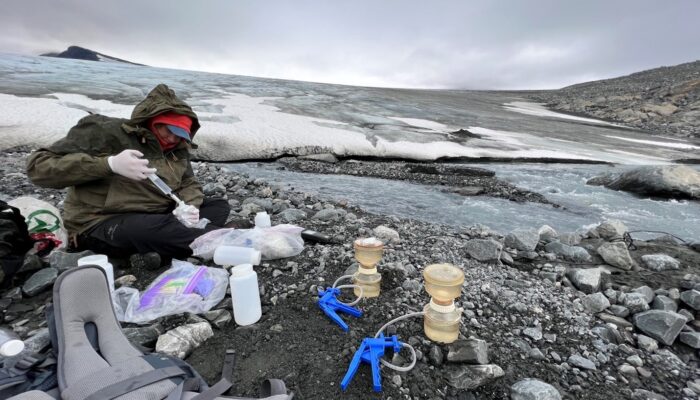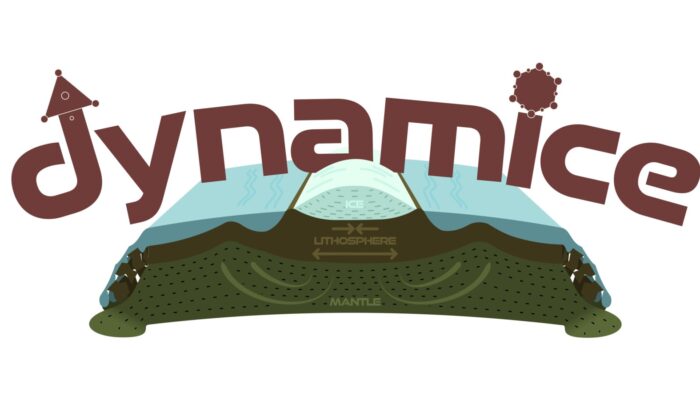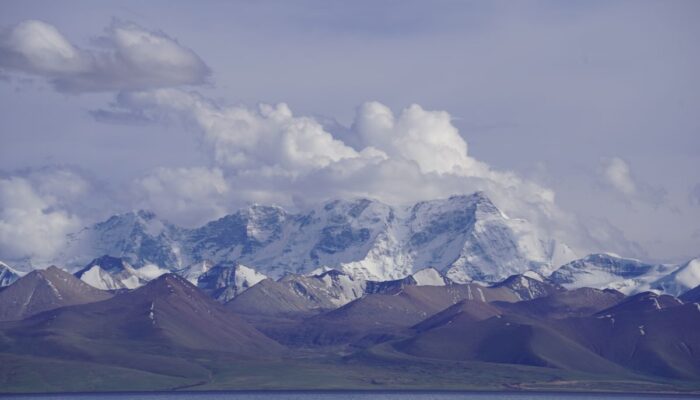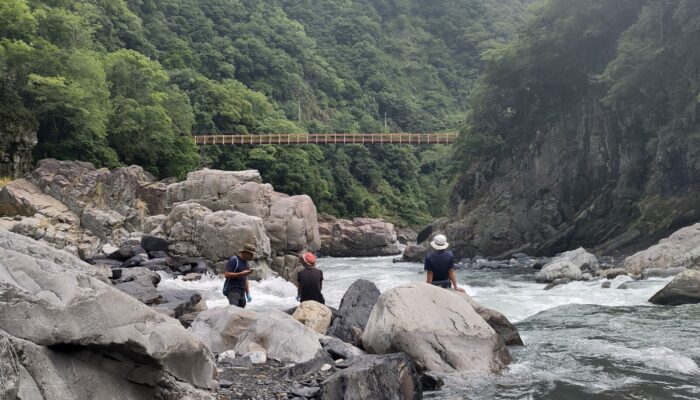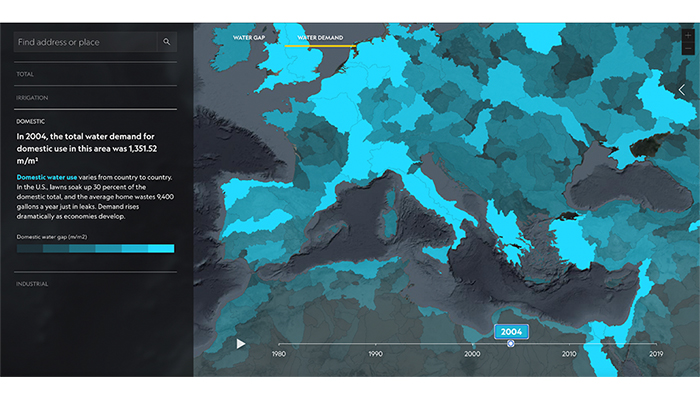Researchers working in STEM fields who also belong to a minority group face more challenges than their more privileged colleagues. Take Maryam Mirzakhani for instance; she was the first woman and the first Iranian to receive the Fields Medal. But along that path, she quietly overcame a lot of barriers on her journey- from being a child during the Iran-Iraq war to educational inequalities and the u ...[Read More]
Hydrological Sciences
Catch the rain when it falls: a journey through water harvesting in the Anthropocene
As an environmental engineer trained in water resources management, I have always been fascinated by the multiple uses of water, and specifically the use of water for food production. I always assumed that “the largest share of freshwater resources was used for food production”, thus I logically pursued my MSc. thesis and then my Ph.D. in agricultural sciences. How Fieldwork Shifted My Perspective ...[Read More]
Geodynamics
A New Look at the Rheology of Deep Subduction Zones
Subduction zones are dynamic regions where intense geological processes like earthquakes, volcanic eruptions, and the recycling of oceanic crust are constantly at play. A key factor that influences the behavior of these zones is *interface rheology*—the strength and viscosity of the boundary (the interface) between the subducting and overriding plates. Understanding this interface is crucial for i ...[Read More]
Cryospheric Sciences
Crossing borders – Glacier fieldwork at Sulitjelma/Salajekna
The time I first set foot at the university, I didn’t expect that two weeks later I would be looking at a backpack more than half my size, turning my back to the shelter of our rental car and walking almost 100 km in the Norwegian Arctic. Howling winds, heavy backpacks, daunting bridges, and endless beauty – that’s how I would describe my first experience with glacier fieldwork. I, Silje Waa ...[Read More]
Geodynamics
DYNAMICE: An ERC Starting grant project to bridge the gap between geodynamics and ice modelling
In the 2024 ERC Starting Grant call, the European Research Council received nearly 3,500 proposals, of which approximately 14% were awarded funding. Among the 20 projects funded in the field of Earth System Sciences is DYNAMICE, led by Ágnes Király, the 2023 recipient of the EGU GD Division Outstanding Early Career Award. Through this blog, Ágnes will introduce us to her project. The vast ice shee ...[Read More]
Stratigraphy, Sedimentology and Palaeontology
Drilling on world’s rooftop – the Nam Co-ICDP campaign on the Tibetan Plateau
International Scientific Continental Drilling Program (ICDP) campaigns may lead scientists from all over the world to most exciting places that are often of extraordinary beauty and remoteness. All these attributes certainly apply to Lake Nam Co situated at an altitude of 4700 m above sea level on the Tibetan Plateau in the Himalayas. Today this area supplies one third of the humankind with fresh ...[Read More]
Geomorphology
Highlights from Taiwan: Sampling environmental DNA (eDNA)
This blog post is part of our series: “Highlights” for which we’re accepting contributions! Please contact one of the GM blog editors, Emily (eb2043@cam.ac.uk) or Emma (elodes@asu.edu), if you’d like to contribute on this topic or others. by Caro Krug, Doctoral Student, ETH Zurich, Switzerland Email: cakrug@eaps.ethz.ch The Formosan landlocked salmon (Oncorhynchus masou formosanus) can only be fo ...[Read More]
Hydrological Sciences
Mapping the Future of Freshwater: An Interview with Niko Wanders on the World Water Map Project
Back in 2022, two hydrologists and water resources specialists from University of Utrecht launched the World Water Map in collaboration with the National Geographic Society and ESRI. Based on the outputs of their global hydrological model PCR-GLOBWB, the team of Marc Bierkens and Niko Wanders map global water resources and identify the regions most at risk of water scarcity. The maps combine stat ...[Read More]
Geodynamics
Dirty Poppy and the Research Tournament of Arcane Mysteries.
In this week’s post, Dr. Katherine Villavicencio (University G. d’Annunzio, Italy) looks into the flaws of the academic system that enables abusive supervisors to hold excessive power. In the form of a wizardly tale, she sheds light on the negative experiences of students subjected to the oppressive control of this kind of supervisors. In an alternate universe, the magical world is governed by ac ...[Read More]
Natural Hazards
An epic blockbuster of natural extreme forces: natural hazards through cinematic lenses
Do you enjoy watching natural hazard movies? Exploring the unfolding of the Earth’s immense power, the level of destruction, human responses and resilience? Can movies offer a glimpse into the chaos and devastation that natural hazard events can bring? Imagine the havoc a storm surge overtopping the Thames Barrier could cause in London. Without a doubt, natural hazard movies raise questions about ...[Read More]


